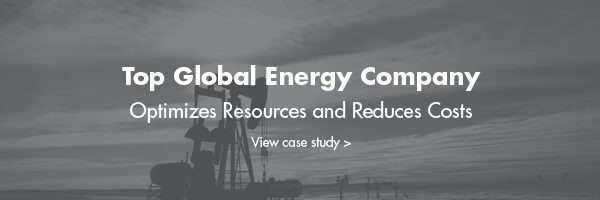A Facilities Leader Looks to Technology to Empower his Workforce


Computers were first introduced in the business sector in 1975, giving small businesses a fighting chance at competing against large corporate enterprises. These tools, called microcomputers, offered the ability to analyze business data through the use of software, such as database management. Just a few years later, organizations began investing in what has become probably the greatest technology to hit the workplace: mid-range computer systems that utilized software packages customized to the needs of end users. This software offered a network for employees to access data in real-time, changing the face of business forever.
Nowadays, it seems there is a mobile application or software solution for all of our personal and professional needs. Investing in technology is no longer an option. It’s become critical to the very survival of businesses worldwide. And with the workplace dynamics evolving at such a rapid rate, it is just as vital that businesses invest in the RIGHT software solutions – one centralized system with the ability to pull disparate data from all workplace tools. One that affords the ability to make real-time decisions, based on the organization’s current needs. Fortunately, there are systems available, which can fit the bill. Finding the right fit becomes the real challenge.
Upgrading your Tech Tools for Greater Abilities
Regardless of what industry you’ve found yourself managing, the business environment is in a constant state of flux. Enterprises must adapt to an array of business factors, including a diverse workforce, the changing needs of the customer, and the current state of the economy. Integral to the business’ evolution is the ability to adapt both the workforce and the workplace in real time. For many years, those in the facilities management field utilized e-mail, spreadsheets, and phone calls as an effective way to communicate and get the job done. But, as one iOffice customer quickly found out, these methods are no longer effective in such a dynamic work environment. They needed greater options and abilities.

For this particular client, a Facilities Executive for a top global, independent crude oil and natural gas exploration and production company, managing their business involves numerous moving parts, both literally and figuratively. Facing high churn rates, it was critical that their workplace be flexible, accommodating the constant movement of both people and assets. To minimize downtime and maximize productivity, employee moves needed to be planned with precision, based on the most accurate and up-to-date metrics. Equally, the assets and equipment must be properly maintained, with planning for the maintenance to be scheduled and operate specific and precise, as well. And, in an effort to minimize the effects of churn and maintain a workforce comprised of today’s top talent, the workforce must be provided with an inspiring, flexible, and collaborative workspace. That’s a tall order for a company still relying on Excel spreadsheets for data management. These methods weren’t cutting it.
In order to gain a better understanding of his company’s changing workplace, so as to support the workplace’s needs fluidly, this FM realized he needed more than what his current software solutions were able to provide. He looked to arm himself and his workforce with an IWMS that was robust enough to support executive level reporting and analytics. He required a system that was powerful enough to fulfill their automated processing needs and could be implemented with ease and timeliness. Due to the competitive nature of the business, the new tool also had to have a relatively low learning curve which quickly armed his workforce with the necessary tools with ease and efficiency.
With an ever-expanding list of tasks, data analysis, planning, and on the fly operational shifts, it is necessary for FMs to have a system which can handle these needs, as well as countless others. And the more powerful and capable the system, the easier the FM’s job becomes, which translates to increased successes for the entire workforce. What you have seen here is only one example, but it is a model for operational success, which can be applied to numerous other organizations, to various degrees, including your own. Find out how an IWMS can affect your organization, with the best possible results.
Want to learn more about how this Facilities Executive utilized iOffice’s IWMS to empower his people and gain a better understanding of the ever-changing market? Click here to read the case study.
